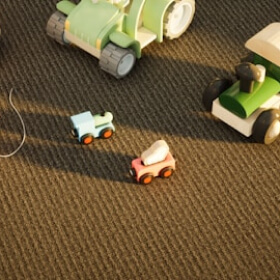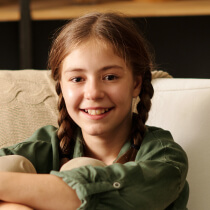How Can Genetic Discoveries Transform Our Understanding of CAS?
Imagine a scenario where traditional speech therapy sometimes seems only partly effective. For many parents, carers, and clinicians, the puzzle of why some children struggle persistently with speech remains unsolved. This landmark study using whole-exome sequencing (WES) offers vital insights by confirming that the origins of childhood apraxia of speech (CAS) are remarkably heterogeneous. By revealing that multiple genes—not just a single mutation—contribute to CAS, the research challenges the conventional one-size-fits-all paradigm and highlights the need for more nuanced, genetically informed diagnostic and therapeutic approaches within paediatric speech pathology.
What Genetic Insights Does Whole-exome Sequencing Provide in CAS?
The article by Worthey et al. (2013) demonstrates that WES can uncover potentially deleterious variants in genes previously linked with speech and language disorders. In a cohort of 10 unrelated participants, variants were found across five chromosomes, with key genes such as FOXP1, CNTNAP2, ATP13A4, CNTNAP1, KIAA0319, and SETX being implicated. Importantly, 80% of participants presented clinically reportable variants, suggesting that genetic heterogeneity is a hallmark feature of CAS. Such findings invite speech pathologists to consider genetic factors as part of a comprehensive assessment protocol, potentially guiding the adoption of precision medicine strategies in the field.
How Can Genetic Heterogeneity Inform Clinical Practices in Paediatric Speech Pathology?
For clinicians at Speech Clinic and allied health professionals in Australia, understanding the genetic underpinnings of CAS is crucial. The evidence supports a move towards personalised therapy programmes that are tailored not only to the behavioural manifestations of speech disorders but also to a child’s unique genetic profile. As clinicians, we must now integrate genetic screening and consultation with multidisciplinary teams—including geneticists and neurologists—to refine our diagnostic accuracy. This holistic approach can lead to more targeted interventions, optimising therapy outcomes and enhancing long-term communicative success for children with CAS.
Table: Key Genes Implicated in CAS and Their Associations
| Gene | Association/Role in CAS |
|---|---|
| FOXP1 | Strongly linked to CAS and language processing |
| CNTNAP2 | Implicated in neural connectivity and related speech-language impairments |
| ATP13A4 | Emerging evidence points to its role in neurodevelopmental processes |
| CNTNAP1 | Associated with general motor-speech deficits and overlapping phenotypes |
| KIAA0319 | Linked to language difficulties and reading impairments |
| SETX | Involved in sensorimotor processing and cognitive aspects linked to speech |
This table summarises the fundamental genetic components spotlighted in the study, providing a quick reference that can be used during multidisciplinary discussions or clinical case reviews.
Which Genes are Implicated and What Does This Mean for Intervention?
The study positions genes such as ATP13A4, KIAA0319, and CNTNAP2 as particularly prevalent in CAS cases. For paediatric speech pathologists, recognising the involvement of these genes creates an opportunity to develop intervention programmes that are tailored to manage the complex sensorimotor and cognitive challenges associated with CAS. Interventions can be refined to address not only the speech deficits but also the broader neurodevelopmental issues that may be present. This emphasises the importance of regular re-evaluation and adaptive therapy plans, ensuring that each child’s evolving needs are met with rigor and compassion.
How Do These Findings Enhance Interdisciplinary Collaboration?
The implications of genetic heterogeneity extend beyond speech pathology, fostering a deeper collaboration between health professionals. With robust genetic evidence, paediatric speech pathologists can work more effectively alongside genetic counsellors, paediatric neurologists, and developmental psychologists. Such collaborations allow for a more comprehensive diagnostic framework and a coordinated care strategy. The integration of genetic findings into clinical practice underscores a commitment to holistic, evidence-based care, ensuring that families receive the full spectrum of support necessary to navigate the challenges posed by CAS.
Future Directions for Research and Practice in CAS
While the study offers compelling evidence of the genetic diversity within CAS, it also opens avenues for further investigation. Future studies with larger cohorts and longitudinal designs would enhance our understanding of the genotype–phenotype correlations in CAS. In practice, an immediate action step for clinicians is to explore partnerships with genetic research centres and to consider incorporating genetic screening as a routine element of the diagnostic process. For parents and carers, this means increased clarity regarding the nature of their child’s disorder and a more informed basis for engaging with a multidisciplinary care team.
Key Takeaways and Future Directions
The insights from whole-exome sequencing present a pivotal step towards precision therapy in CAS. Key takeaways include:
- CAS is genetically diverse, necessitating a personalised approach in assessment and intervention.
- Integration of genetic data into clinical practice can refine diagnostic protocols and treatment strategies.
- Interdisciplinary collaboration is paramount for holistic care, optimising both diagnostic clarity and therapeutic outcomes.
- There is a need for additional research, particularly with larger cohorts, to further validate these findings.
If you or your child need support or have questions, please contact us at Speech Clinic
What are the clinical implications of whole-exome sequencing findings in childhood apraxia of speech?
Whole-exome sequencing helps reveal the genetic diversity in CAS, allowing speech pathologists to consider genetic factors in their diagnostic and therapeutic approaches.
How can understanding genetic heterogeneity improve assessment and intervention strategies for CAS?
Genetic insights can lead to personalised therapy programmes tailored to a child’s genetic profile, supporting more effective interventions.
Which genes are most commonly associated with CAS, and what is their impact on speech development?
Genes like ATP13A4, KIAA0319, and CNTNAP2 are implicated, affecting neural connectivity and motor-speech processes, thus impacting speech development.
How does interdisciplinary collaboration enhance outcomes for children with genetically linked speech disorders?
Collaboration between specialists including geneticists, neurologists, and speech pathologists creates a comprehensive care strategy, improving diagnostic and therapeutic outcomes.
What are the next steps in research to further elucidate the genetic basis of CAS?
Future research should focus on larger cohort studies and longitudinal designs to deepen understanding of genotype–phenotype correlations in CAS.

















